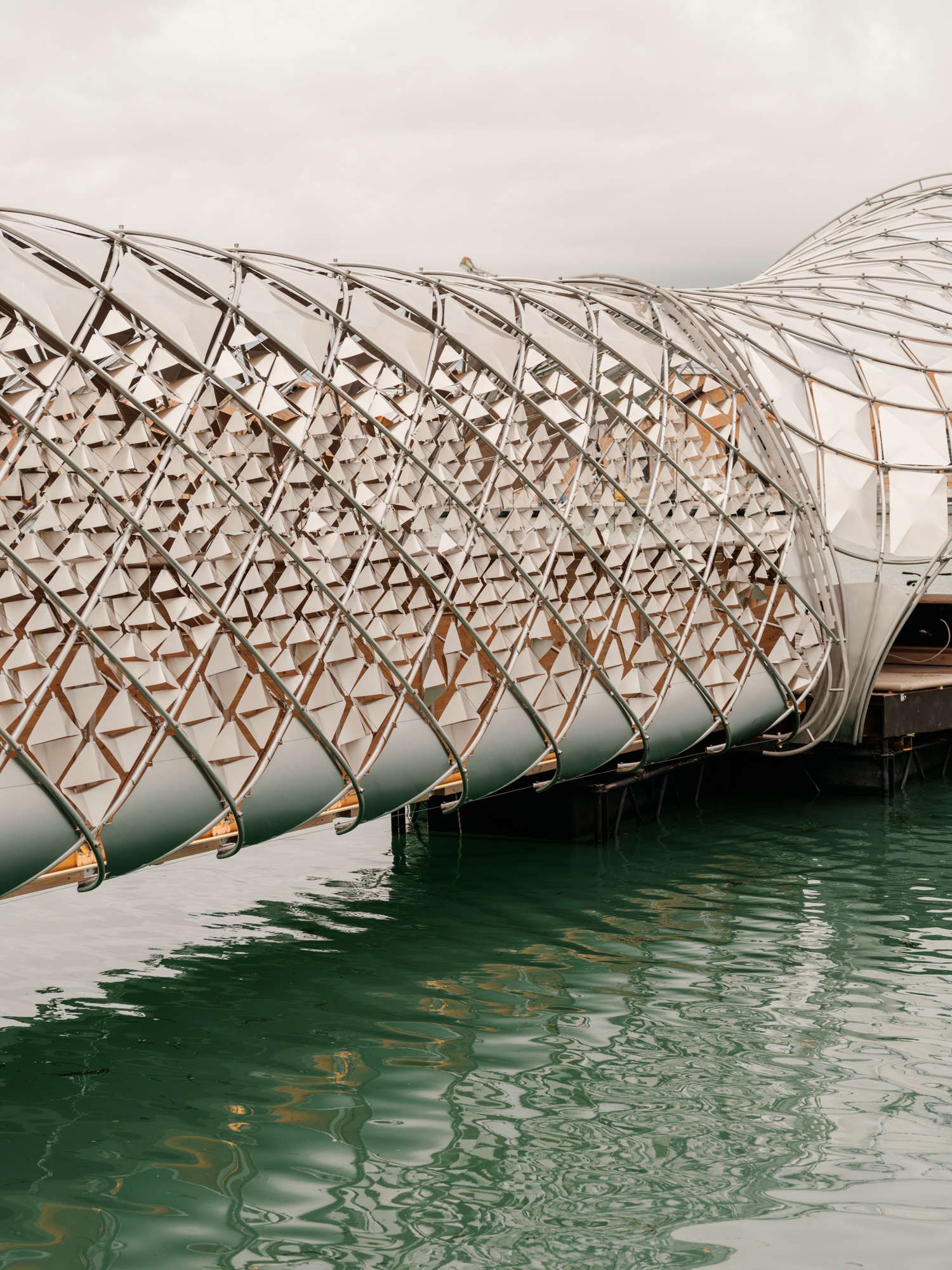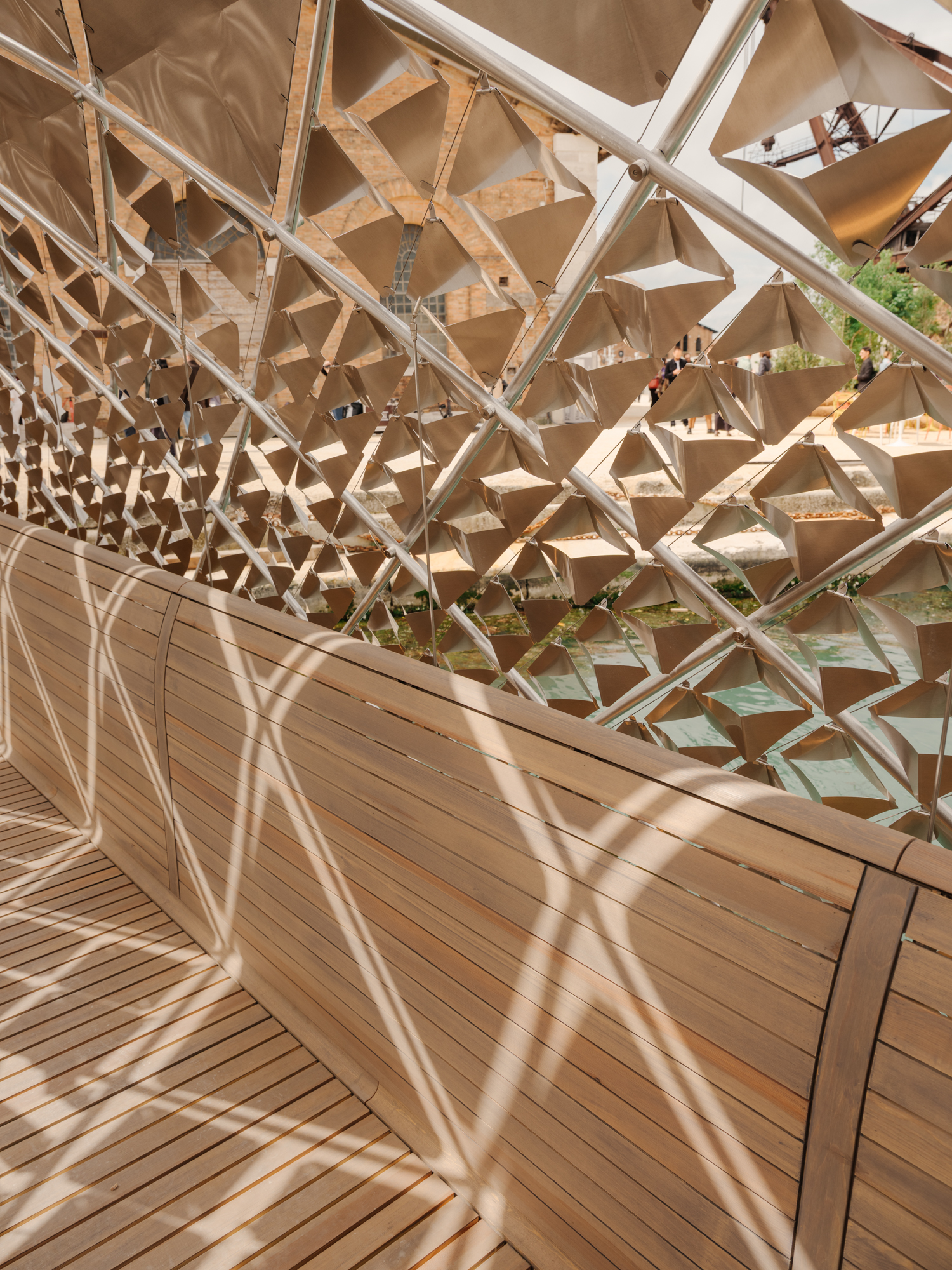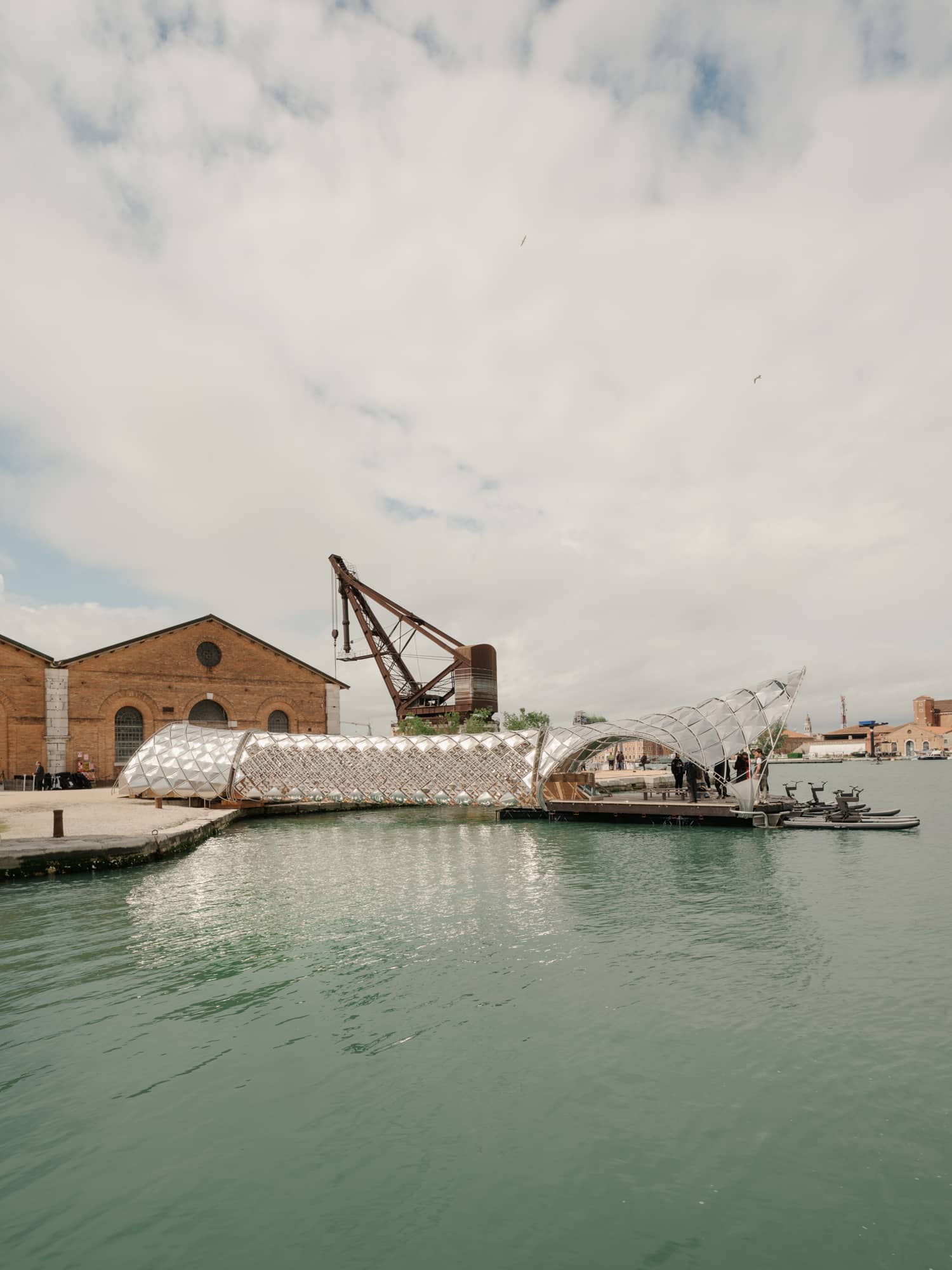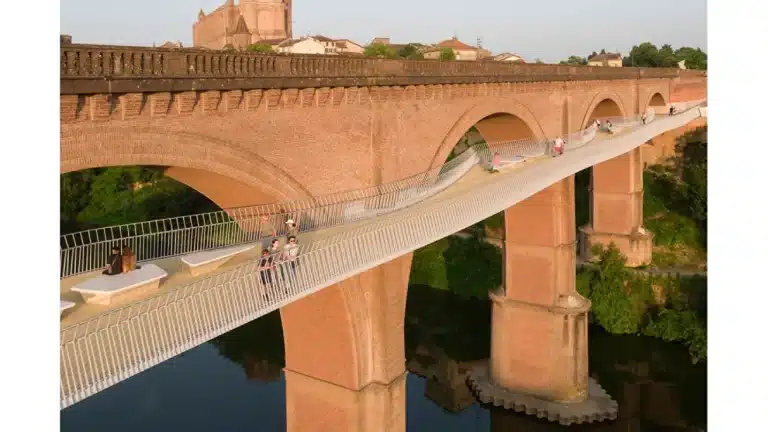Gateway to the Future: Exploring Sustainable Mobility and Architectural Design at Venice 2025
The New Intervention in Venice’s Architecture: Exploring the Future of Movement and Sustainable Transport
At the Venice Architecture Biennale 2025, the “Gateway to the Canals of Venice” debuted as part of a new architectural intervention, offering an innovative vision for the future. The project, a collaboration between the Norman Foster Foundation and Porsche, is displayed along the Arsenale area’s waterfront, one of the biennale’s main sites.
The Gateway: An Art Installation and Dialogue Platform
The project is a floating art installation that spans the water. It blends modern art with an analytical approach to infrastructure and future transportation methods in Venice.
This project isn’t just an aesthetic addition. It serves as a dialogue platform to discuss the future challenges of movement in a city that relies on water channels instead of traditional roads.
Rethinking Mobility in a Floating City
Venice depends on water for almost everything, with its canals as the main arteries for transport. Unlike other cities, Venice doesn’t rely on roads or traditional vehicles.
This project explores new ways of sustainable mobility in this unique environment. It marks an important step in understanding how to adapt to environmental challenges. It also addresses urban expansion and future changes.
Expressing Movement through the “Gateway to the Canals of Venice”
At the heart of the Venice Architecture Biennale 2025, the “Gateway to the Canals of Venice” project by architect Norman Foster presents an innovative concept of mobility. This is particularly relevant in a city that relies more on water than on traditional roads.
Engaging with Nature: The Design of the Floating Structure
The project takes the form of a floating dock extending across the waters from the banks of the Arsenale area, one of the main sites of the Venice Biennale. The primary aim of this project, as Foster explains, is to spark a conversation about mobility in an unconventional environment like Venice. The city has a unique relationship with water.
Drawing Inspiration from the World of Racing
Foster, known for his great passion for collecting classic cars, notes that the 37-meter-long aluminum structure is inspired by the “tubular frame of vintage race cars.”
The structure consists of a curved (diagrid) frame fitted with diamond-shaped aluminum panels of varying sizes. This frame is designed to reflect light in a way similar to the ripples of water in the canal. It gives the project a dynamic interaction with its surrounding environment.
The Idea Behind the Design: Engaging with Nature
Foster explains:
“The idea was to use very simple materials, but with high engineering complexity, to create something that interacts with nature – with the wind, the light, and the shadows – and sways with the movement of the waves.”
This design is not merely a static structure. Rather, it reflects the natural changes in the surrounding environment, enhancing the visual and interactive experience for both visitors and residents alike.

Exploring the Nature of Mobility in a City Without Roads: Porsche in Venice
While the presence of the Porsche brand in Venice, a city without roads, may initially seem illogical, Michael Mauer, Vice President of Design at Porsche, views this project as an exploration of the nature of movement. This is relevant even in the most unexpected environments.
Mauer says:
“When you work in the automotive industry, you talk about mobility. This gateway symbolizes how mobility solutions could work in a city like Venice.”
Through this idea, the project raises questions about how transportation can adapt to the water-based environment. This is one of the factors that sets Venice apart from other cities.
Schiller Bike: An Innovative Solution for Mobility Across Water
Among the project’s innovations is the floating bridge providing access to a fleet of Schiller bikes—watercrafts powered by pedals. These bikes combine the form of a traditional bicycle with lightweight floats, allowing users to “ride a bike” across the water’s surface.
These vehicles represent an innovative solution that fits Venice’s aquatic environment. They reflect the creativity of the design in finding sustainable mobility solutions for a city closely tied to water.
The Real Challenges of Transportation in Venice
Through this project, Porsche and the Norman Foster Foundation highlight the significant challenges that transportation faces in Venice. The traditional gondola, now exclusively used by tourists, is the only known watercraft in the city. Additionally, there are no electric or renewable-powered boats.
Sustainable Mobility: The Future the Project Envisions
Both parties hope that by introducing Schiller bikes, alongside a fleet of electric-powered Fantom Air 850 Frauscher x Porsche boats, they will spark a conversation about new and sustainable mobility solutions for this historic floating city.
During the opening days of the biennale, these boats and bikes were showcased to illustrate the potential future of sustainable mobility. Their introduction opens the door for deeper reflection on how to address environmental challenges and future expansion in Venice.

Porsche’s “Art of Dreams” Program: A Crossroad Between Art, Design, and Urban Innovation
This project represents the latest chapter of Porsche’s “Art of Dreams” program, which aims to explore the intersections of art, design, and urban innovation. The program serves as an opportunity to foster collaboration across various creative fields. It achieves this by merging artistic ideas with architectural and technological innovations.
Previous Projects: Art That Crosses Boundaries
In previous iterations of the program, artist Thomas Trom created large-scale artworks in southern France. These allowed viewers to experience art in unconventional ways. Additionally, the Numen/For Use group constructed a massive interactive sculpture made of climbable nets in the middle of a historic palace in Milan. This initiative reflects the ability of art to transform into an interactive experience that merges art with place.
Partnership with Norman Foster: A Fusion of Creativity and Deep Understanding
For Michael Mauer, Vice President of Design at Porsche, this partnership fundamentally embodies the spirit of interdisciplinary exchange.
Mauer says:
“It was a rare opportunity to work with Norman Foster. The automotive industry is highly organized and streamlined, so exchanging ideas with a creative community is extremely important to us.”
Mauer speaks about Norman Foster, who is not only a renowned architect but also a car collector with a strong passion for automotive history. For Foster, it was an exciting moment to hear Mauer’s thoughts on car design. Such thoughts represent part of the unique relationship between architecture and the automotive industry.
Collaboration Between Art and Architecture
Mauer adds:
“Although the creative process in car design and architecture may seem similar, the results are completely different. We truly understood each other on a deep level.”
This fruitful exchange between industrial design and architecture reflects the overlap of engineering arts across many fields. It emphasizes the importance of collaboration between artistic creativity and technological innovation to achieve unique architectural solutions.

19th Venice International Architecture Biennale 2025
The 19th Venice International Architecture Biennale for 2025, under the direction of Carlo Ratti, opens its doors to the public from May 10 to November 23, 2025. The theme of the exhibition is “Intelligent. Natural. Artificial. Collective.”
Concept of the Exhibition
This year, the biennale aims to explore and expand the boundaries between natural and artificial intelligence. It focuses on how collective intelligence is influencing the world of architecture. The exhibition investigates the mutual impacts of technology and the natural environment in the design and construction of urban spaces.
Modern Architectural Challenges
A central aspect of the exhibition is the discussion of the current challenges architecture faces in the face of environmental and technological changes. There is a call for sustainable and practical solutions.







